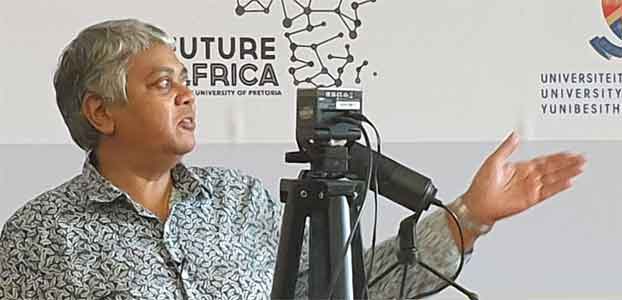Day 4: Conservation & Heritage

Dr. Davison Chiwara (Online): Keynote on Conservation and Restitution

Jacqueline Okeyo (Online): Heritage and conservation - East African indigenous societies
Indigenous societies have endeavored to maintain their cultural practices in spite of the changing global times. Perhaps this is due to their preference of living in isolation contributing to minimal external influence. This practice has been vital to their survival. Organizations like UNESCO have long advocated for their conservation and protection due to their being marginalized. Examples of indigenous communities in East Africa include, Samburu (KE), Karamojong (UG), Hadzabe (TZ). They prefer traditional dress, some have body markings (scarification, painting) and the majority only speak their cultural language. They hardly mingle with the larger society. In an effort to promote world diversity, UNESCO have advocated for their conservation in order to ensure their value is not diminished and their practices are not abandoned. These communities have contributed to the national reserves of their respective countries as they serve as tourist attractions. They have also contributed greatly in the provision of indigenous knowledge in protecting and conserving the environment in which they live in through their cultural practice of animism, according to which every living thing possess a spirit. Therefore, they should strive to always appease those spirits in order to maintain peace with the spirit world. This study seeks to investigate the efforts being made by various institutions to protect these societies in the hope that it will create awareness on their value and significance by highlighting their contribution to society on matters related to indigenous knowledge. Qualitative research dedicated to a historical approach will explore the above hypothesis. The scope of the study will cover indigenous communities in Kenya, Uganda and Tanzania who are considered as marginalized. Successful conservation of heritage helps in preserving and safeguarding natural resources. It also contributes to the revitalization of local economies, in addition to bringing about a sense of identity, pride and belonging to its members.

Benjamin Zugu (Online): Cultural heritage and the Tiv language - The need for preservation
After a war, a ravaging pandemic, an epidemic of the great kind, the survivors usually bear sores of various degrees, some physical and others psychological. The situation is more dire when a chemical, be it biological or radioactive is used, for widespread death and destruction is used. This often leaves a huge vacuum in the cultural heritage of the people and the erosion of cultural norms, as the people are left moaning and languishing in their pain. Sometimes, the incursion of their normal lives, by the invaders, gradually overshadows their culture and traditions, making way for the emergence of new cultures, especially among the youth. There is always a need to rebuild before their own heritage could go into extinction. This paper investigates the place of cultural heritage, not just as a healing balm for festering souls occasioned by social dislocation, but as a weapon of conservation. This study adopted the sociological and functionalist theory as framework and KII as method to look into the Tiv language as cultural heritage.
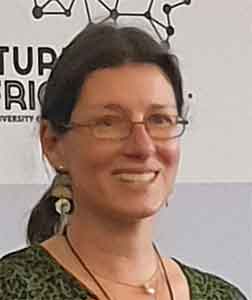
Isabelle McGinn: Restoration – More than staples and glue
In 2019 the University of Pretoria launched its inaugural intake of a master's programme in Heritage Conservation. The programme was developed as a response to a shortage of skills in art and heritage conservation and the first of its kind in sub-Saharan Africa. The presentation reviews the reasons for the development of the programme, its aims and scope within the current South African conservation landscape interrogating what is and isn’t conservation. Students from a diversity of backgrounds have focussed their research on local tangible and intangible art and heritage, its preservation and conservation challenges emphasizing local solutions. As the year of our fifth intake, 2023 offers a chance both for reflection, as well as envisioning the expansion of the programme into centres of excellence for southern Africa and connecting further afield with other centres on the African continent.

Salomé le Roux: A technical survey of Lucky Madlo Sibiya’s (1942 – 1999) materials and techniques employed in his carved and painted wood panel artworks
The study aims to achieve an understanding of the artist’s materials and techniques used by Lucky Madlo Sibiya when he created his carved and painted wood panel artworks. A survey of the artist’s materials and techniques is of great importance because he is represented in multiple institutional, corporate and private collections – including the University of Pretoria’s. His carved and painted wood panel artworks are also reaching an age (at least 20 years old, as 2019 is the twentieth anniversary of his death) when they will soon require conservation and restoration, if not stored and displayed according to sound conservation conditions and standards. For best-practice conservation and restoration, in-depth knowledge of the materiality of an artwork is needed. To reach an in-depth knowledge of the materiality of Sibiya’s carved and painted wood panel artworks, the survey intends to examine and document through the combination of various historical, visual and analytical techniques artworks with unrefuted provenance. The analytical techniques used are popular in heritage conservation because they are non-invasive and non-destructive. They include provenance studies, visual examination, technical photography, X-ray Fluorescence and Fourier-transform Infrared Spectroscopy. In combination, the techniques should reveal the materials and techniques Sibiya employed. This knowledge will be used to safeguard and preserve this part of South African art heritage.
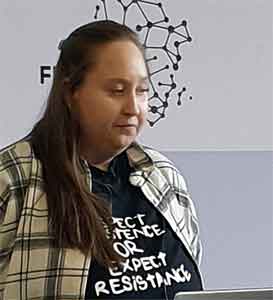
San-Mari van der Merwe: I want to tell you my name. Augmented Reality as conservation method for Between Words and Images by Ernestine White-Mifetu and Toni Giselle Stuart
Between Words and Images, curated by Ernestine White-Mifetu, is an exhibition that serves to reclaim the narrative of the marginalised female body in the face of overwhelming, ever-present colonial history. The exhibition presented in Levaillant’s former home is based on a set of artworks from the 18th-century French traveller, depicting a nude native South African woman. The exhibition is accompanied by the poem of South African poet Toni Giselle Stuart, the woman. In the poem, the woman begs to be covered, for the ocean to wash her clean. White-Mifetu presents a woman who wanted to have her name heard, her trauma understood, and her story reclaimed. It is here where we begin to wonder what to conserve – the object, or its story. The material, or the experience. Conserving time-based media is complex as the key element is not a physical object, but rather its character, message, or how the message is perceived and received by the visitor and their experience of it. The essay discusses digital conservation options to ensure long-term availability and accessibility for site-specific art, where location is integral to meaning. This approach could be particularly significant for exhibitions that, as a result of their theme, content, or social commentary remain relevant today.
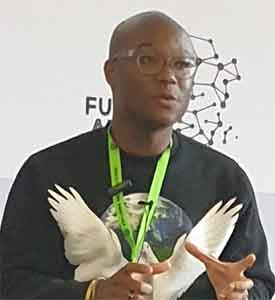
Allan-Charles Chipman: Intersecting History: Utilizing public institutions and community historians to build an “Infrastructure of Understanding”
Intersecting History, an Initiatives of Change USA program, is a coalition of museums, cultural institutions, and community historians that seek to intersect diverse and marginalized histories to form a more just and inclusive public memory. It is a change management strategy and suite of programs to build an “infrastructure of understanding” in an increasingly polarized society. The premier feature of the coalition is the annual “museum crawl” where attendees can go to their trusted museum of choice free of charge and get a free bus ride to all of the participating museums to intersect with new narratives they may not typically experience regarding race, social justice, and public memory. Beyond engaging with institutions, Intersecting History participates with grassroots historians to guide the public through sites of consciousness and public art to foster greater public memory, education and solidarity between groups experiencing tension through the Collective Journeys programming. Intersecting History has now expanded its work into public libraries with the “Circle Up” programming that uses facilitated dialogue circles to have higher conversations about the deeper issues of society and create space for people to encounter truthful healing narratives to transition society from the public square to the public circle.
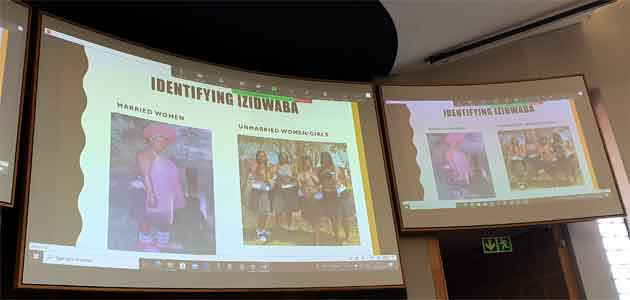
Mabafokeng Hoeane: Artistic Legacy and Cultural Significance of Izidwaba
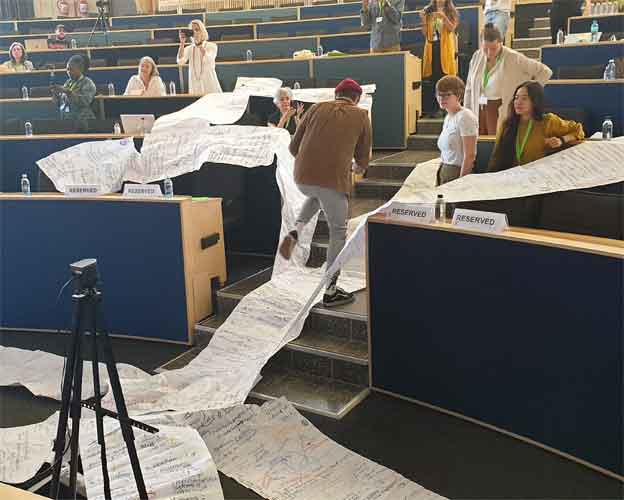
Unfold - Wrap Up
